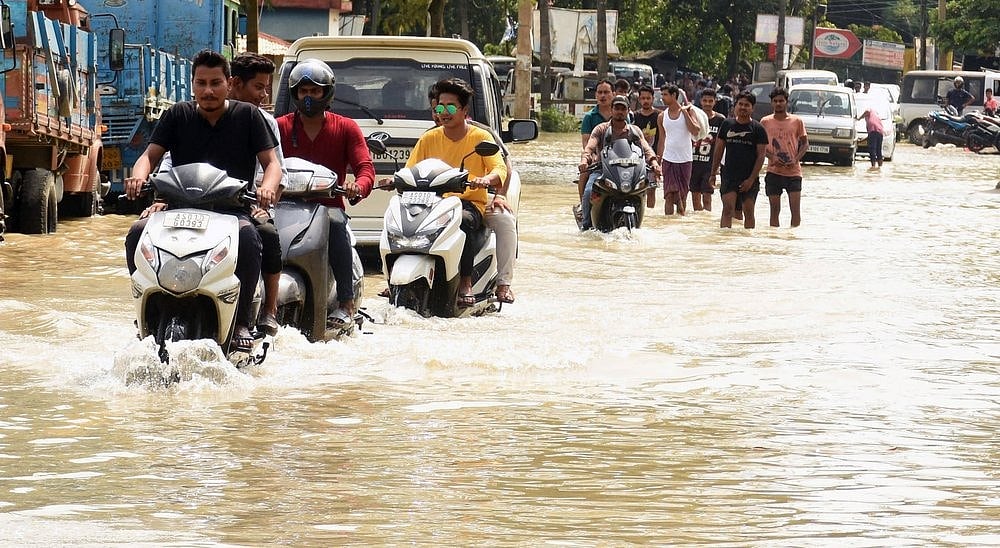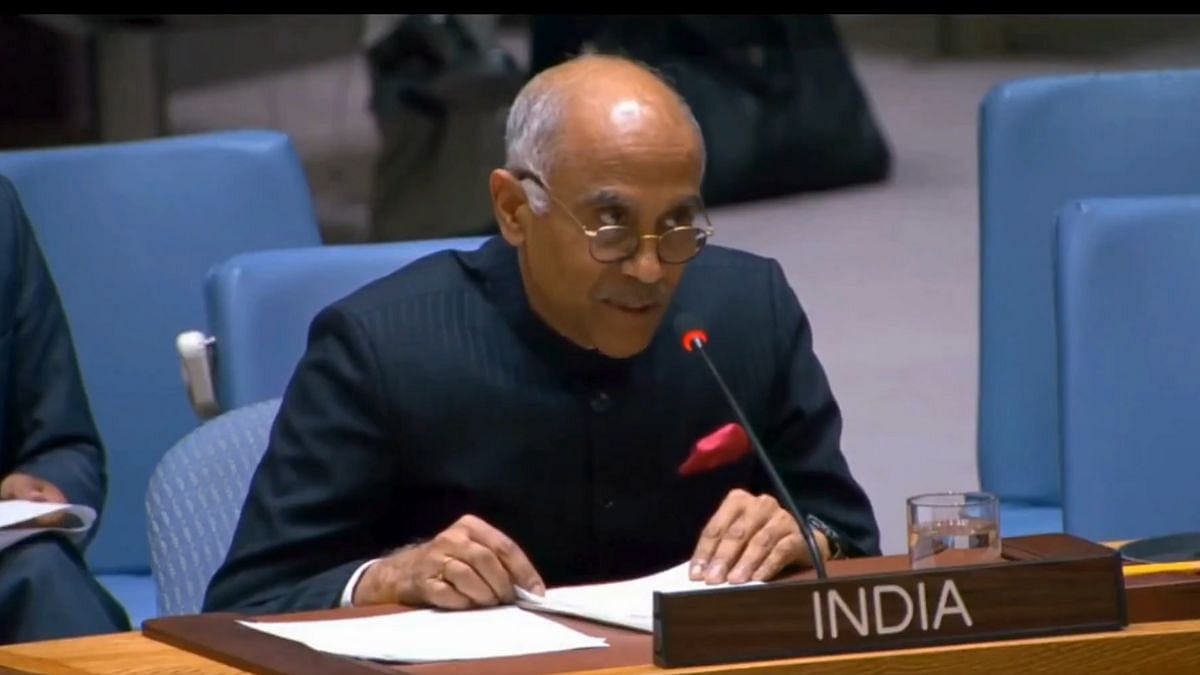Residents of Assam have been coping with flood devastation of the floods. In 26 districts, flood damage is still present. In the state, 1,600 villages have been entirely inundated by flood waters. The number of fatalities has now reached 179. Approximately 14 lakh people in 22 districts are still struggling as a result of the flood. Over 40,000 hectares of agricultural land in 14 districts is also impacted, in addition to the human casualties. This horror story is nothing new and what is worse, happens every year. It's important to get one thing straight: flooding in Assam is a case of policy collapse. And the main reason behind this policy failure is the criminal negligence of successive central governments, irrespective of party lines, towards the North-Eastern states of India.
Unfortunately, for more than 60 years, both the central and state governments have failed to find effective solutions to lessen the damage done by the rampaging floodwaters. To control floods, the state has mostly used embankments. Early in the 1950s, when the hydrology of most Indian rivers, including the Brahmaputra, was not well understood, Assam used this flood control strategy.
The construction of embankments is not only a flawed policy to control floods but also an act of giving a free hand to corruption. There is a political economy behind the construction of embankments, and no political party when in power has tried to go beyond this method. Recently an embankment was breached again during this flood. It had reconstructed after getting damaged during the floods in the month of May. Exports from Assam have repeatedly observed that the companies get the contracts for these embankments and make a profit from these repeated distractions. According to the Assam State Disaster Management Flood Report in June, this year around 297 embankments in 20 Assam districts have been breached overall, including 33 in Darrang alone.
Rivers break these barriers every year in the floods that occur after the monsoon, inundating homes and other buildings. Over the past 60 years, Assam's successive governments have invested close to Rs 30,000 crore in the construction of embankments. These barriers are ineffectual, as shown by the numerous reports of devastation each year. The flood situation has been further worsened by additional man-made elements such as deforestation, hill cutting, encroachments, and damage to wetlands. Embankments caused the banks of rivers to encroach upon them as more people built homes and established businesses there.
The way embankments have failed miserably as a policy, the government has ignored the sedimentation of the Brahmaputra river as well. The Brahmaputra, the main river that crisscrosses the floodplains, traverses Assam for a length of roughly 650 km and an average width of 5.46 km. The river is nearly 5,000 metres above sea level when it leaves the Kailash range, and becomes heavily sedimented when it reaches Assam. The sedimentation rises in the summer when soil erodes from glacier melt. The high amount of sedimentation of the Brahmaputra has been mentioned in numerous study studies; this may cause the river to rise in level and impair its capacity to carry water. This issue has been in front of the governments for a long time and the experts have noted that regular removal of sedimentation will not help to control the problem. However, the government has not come up with any pragmatic solutions.
The flood in Assam and Northeast India is not something which can be tackled at the state level. To tackle such a massive natural calamity the state governments need not just immense financial power, but also manpower. With the limited capacity of both, the state government is repeatedly failing and is forced to maintain the status quo. When a flood happens the authorities take some emergency steps and wait for things to get better. Here the most important thing is immediate intervention and serious policy-making on the part of the central government. Without the support of the central government, the flood situation in Assam and North-East India will not be able to be managed.
For example, the central government presented data to answer questions raised by an MP in the winter session of the Lok Sabha 2021 and observed that the central government has not released funds under NDRF to Assam during 2018-2021. However, the government released around Rs.44.37 crores for restoration work during 2020–2021. Here the question is not why the government did not release funds or any other whatabouteries, but to observe that this shows negligence towards the issue, the residents and the entire region.
Similarly, it is also important to understand that the reasons for floods are not limited to the failure of policy-making. There is an increasing threat from climate change. The flood of water entering the Brahmaputra from the north bank has increased due to the excessive melting of the Himalayan glaciers, which also brings additional silt with it. On the other hand, Bangladesh's flatter geography makes it particularly vulnerable to cyclones from the Bay of Bengal, which are made stronger by climate change and an increase in flooding incidents. Meanwhile, research has revealed that rising global temperatures have been gradually affecting the monsoon pattern in India, and the more frequent maritime heatwaves could magnify alterations to the seasonal rains that are relied upon by at least one billion people.
It is time for India to have a pragmatic and proactive flood management policy. The researchers of IIT Bombay have opined that the flood management policy of India should shift from “passive” to “progressive”. Secondly, the central government and the states should come together to form these policies. In India, the policy-making has always been Delhi-centric and that is why Northeast India gets ignored year after year. It is high time to course correct policy-making regarding floods and sincerely focus on tackling the issue of floods in this region.
(The author is an independent journalist and columnist based in Kolkata and a former policy research fellow at the Delhi Assembly Research Center. Views expressed are personal. He tweets at @sayantan_gh.)









